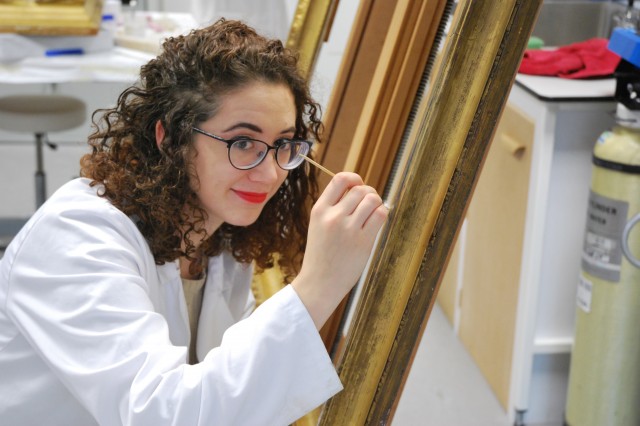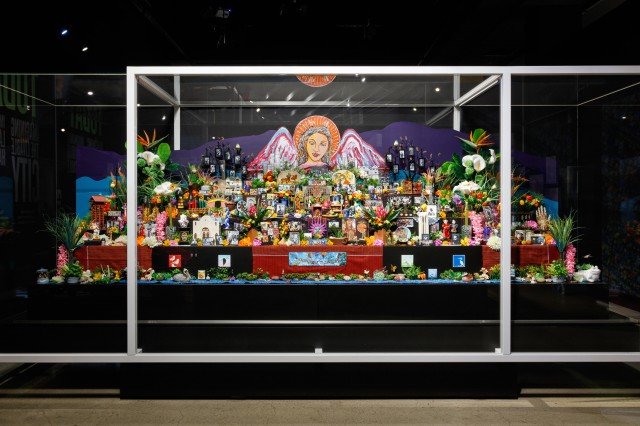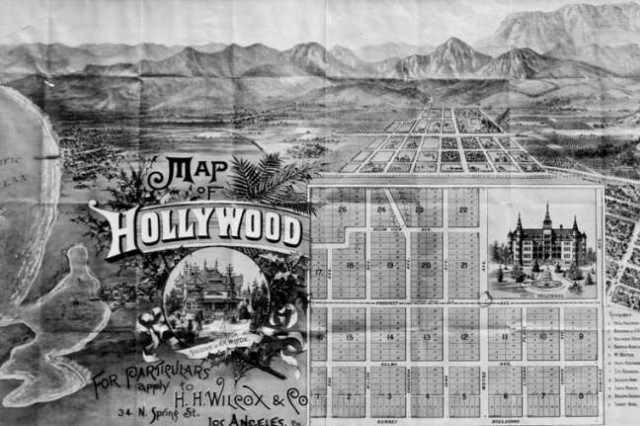Goth Couture
A behind-the-scenes look at preparing Wednesday Addams' dress for display in NHM's Becoming Los Angeles exhibition.
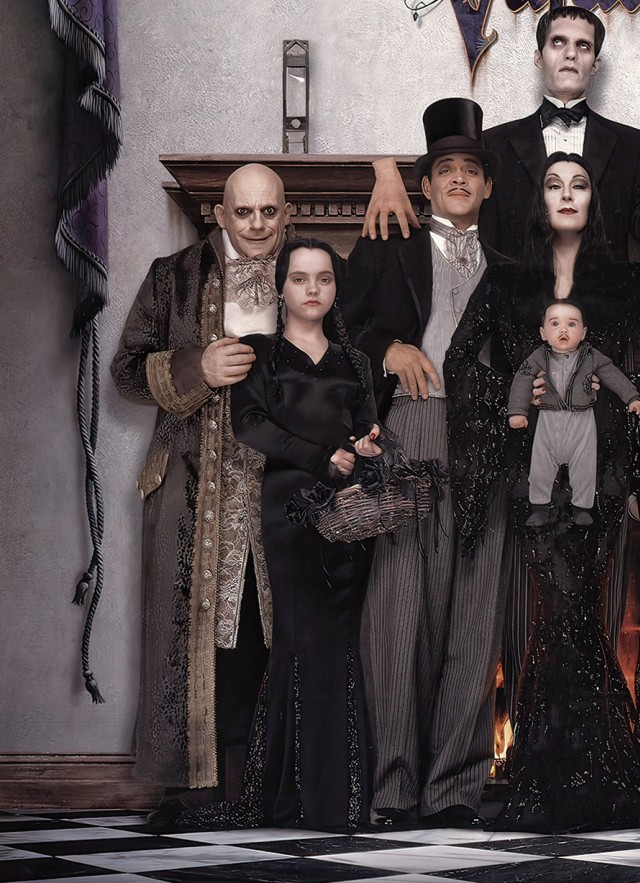
Updated September 20, 2023
Becoming Los Angeles got a whole lot more kooky, spooky, and ooky with the arrival of Wednesday Addams’s flower girl dress from the film Addams Family Values.
Worn by Cristina Ricci as Wednesday, the dress is modeled after Addams’s matriarch Morticia’s vampiric black gown but created for the then 12-year-old actress. Rhinestones trail the collar’s v-neck, and the dress hugs the hips, flaring out at the feet in what’s called a mermaid profile, with macabre details such as spider web-like cuffs and an ethereal flowing black train.
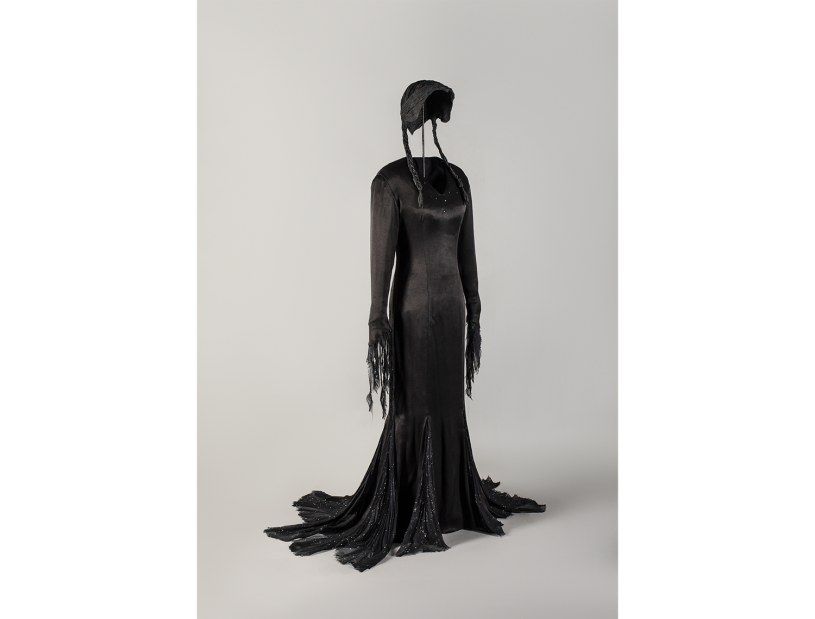
The gown was the work of Academy and Tony Award-winning costume designer Theoni V. Aldredge, one of the American theaters' most honored costume designers. Aldredge emigrated from Greece to the U.S. in the 1940s and designed costumes for 40 stage productions and 19 films. Her prolific body of work included 1974's The Great Gatsby (which won her the Oscar) as well as spooky comedies like Ghostbusters and Addams Family Values.
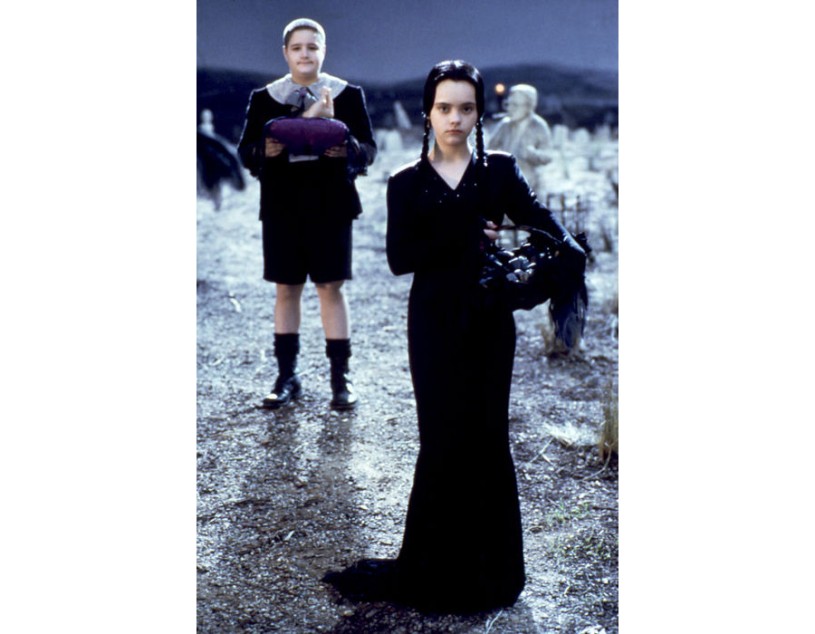
Every costume featured in Becoming Los Angeles needs to be properly prepared for display, which can include everything from sewing, chemical testing, and in this case a bespoke Wednesday-sized mannequin. It’s all in a day’s (well, months and months of days) work for Marina Gibbons, Associate Conservator at NHM.
“I get to prepare costumes for display twice a year, and it’s a completely different challenge every time,” says Gibbons. “That’s why I enjoy it.”
As a conservator at NHM, Gibbons is something between a detective (using clues to discover everything about an object’s journey), a research scientist (exploring how to best restore an item with a bevy of conservation methods), and a crafter (there’s a lot of hot glue going on), and she keeps copious notes on each object’s condition.

“Every time we deal with an object, whether or not we're treating it, we write a condition report to establish what condition it's in,” says Gibbons. In the case of Wednesday’s gown, that meant reviewing any restoration or repairs done by her predecessor, checking over that previous work, and noting any changes. “It’s like an autopsy.”
“Dealing with somebody's clothing is just very personal. It's something that goes on their body,“ says Gibbons, and part of conserving historical clothing like Wednesday’s gown is unraveling that person’s story–for conservators, attention to detail is a must.
“This isn't a couture gown, it's a working object,” says Gibbons, pointing out the rough tailoring of its hem. “This is also pinking shears just all the way around the hem—and then these trailing bits are also not hemmed, and there are also a few tears from where she stepped on it. That's also part of the story, and frankly, I don't necessarily want to repair all evidence of wear, because it has to do with a specific historical event.”
image by Tyler Hayden
Gibbons points out flecks of white paint in the train. The paint could reflect a desire to achieve a spooky sparkle or a hurried spackle from a costume design team pressed for time.
image by Tyler Hayden
To give the gown a more human feel, Gibbons also crafted the mannequin arms pictured above. They're tipped with black to hide the foam from viewers.
image by Tyler Hayden
The rough tailoring around the gown's hem emphasizes the object's role as a costume with limited visibility on screen. No one would've seen the scissor pattern so there was no need for careful tailoring.
1 of 1
Gibbons points out flecks of white paint in the train. The paint could reflect a desire to achieve a spooky sparkle or a hurried spackle from a costume design team pressed for time.
image by Tyler Hayden
To give the gown a more human feel, Gibbons also crafted the mannequin arms pictured above. They're tipped with black to hide the foam from viewers.
image by Tyler Hayden
The rough tailoring around the gown's hem emphasizes the object's role as a costume with limited visibility on screen. No one would've seen the scissor pattern so there was no need for careful tailoring.
image by Tyler Hayden
For Gibbons, the small tears in the train and long hem help paint a picture of a young actress working in an unfamiliar costume used in a single scene—a scene Gibbons watched many times to build the gown’s mannequin.
For the gown’s tenure in the Becoming L.A. costume case, Gibbons crafted an invisible form mannequin, so named for disappearing within the clothing it showcases. The costume was created specifically for a pre-teen Ricci, so Gibbons had to get creative.
She glued together bricks of foam, attempting to match the size to the dress, looking for anatomical cues from the actress’s performance on screen, and shearing away foam to make it fit. “I use a packing knife, and I carve the person out of it.”
After slashing away enough foam, Gibbons added Tyvek–an industrial non-woven material made soft through washings—to give the mannequin a more believably soft human shape, all of which Gibbons adjusted (and adjusted, and adjusted) to best reflect Ricci’s physicality in the performance and complete the illusion. “It's a lot of rewinding the same 12-second YouTube clip and staring at that for long periods of time.”
“I'm still fussing around with the arms,” Gibbons says, gesturing to more mannequin anatomy on the table. “The arms are over there. They're just tubes at the moment.”
To complete the setting, Gibbons crafted a wig of Wednesday’s iconic braids. Again studying the tape to get the proportions just right.
As of writing this, Gibbons might be the foremost expert on Wednesday’s work as a flower girl in Addams Family Values, but she still hasn’t seen either of the films. Despite that egregious oversight, the Addams Family did make an impact on her.
“My mother grew up watching the original TV series in the '60s, and I remember her telling me how important it was, at the height of the Cold War, to have a franchise about the fact that people who seemed very, very different from you could actually be the most wholesome individuals in town.”
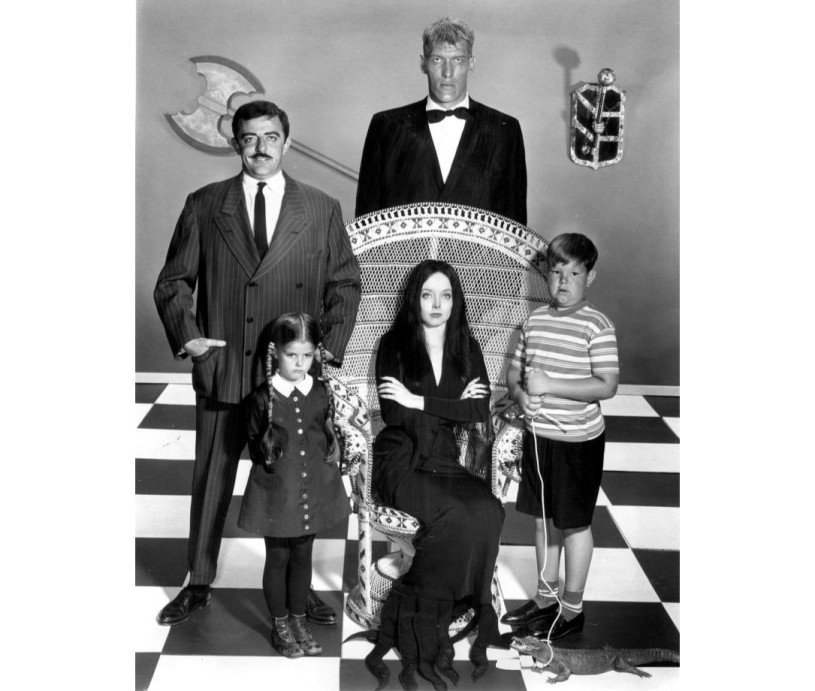
“I think the messages stay the same, which is one of radical tolerance, and it's just as true today as it was at the height of the Cold War, when so much of our national politics is about dividing people, and prejudice against people who look or seem or act differently than the majority,” says Gibbons. We can all snap, snap to that.
